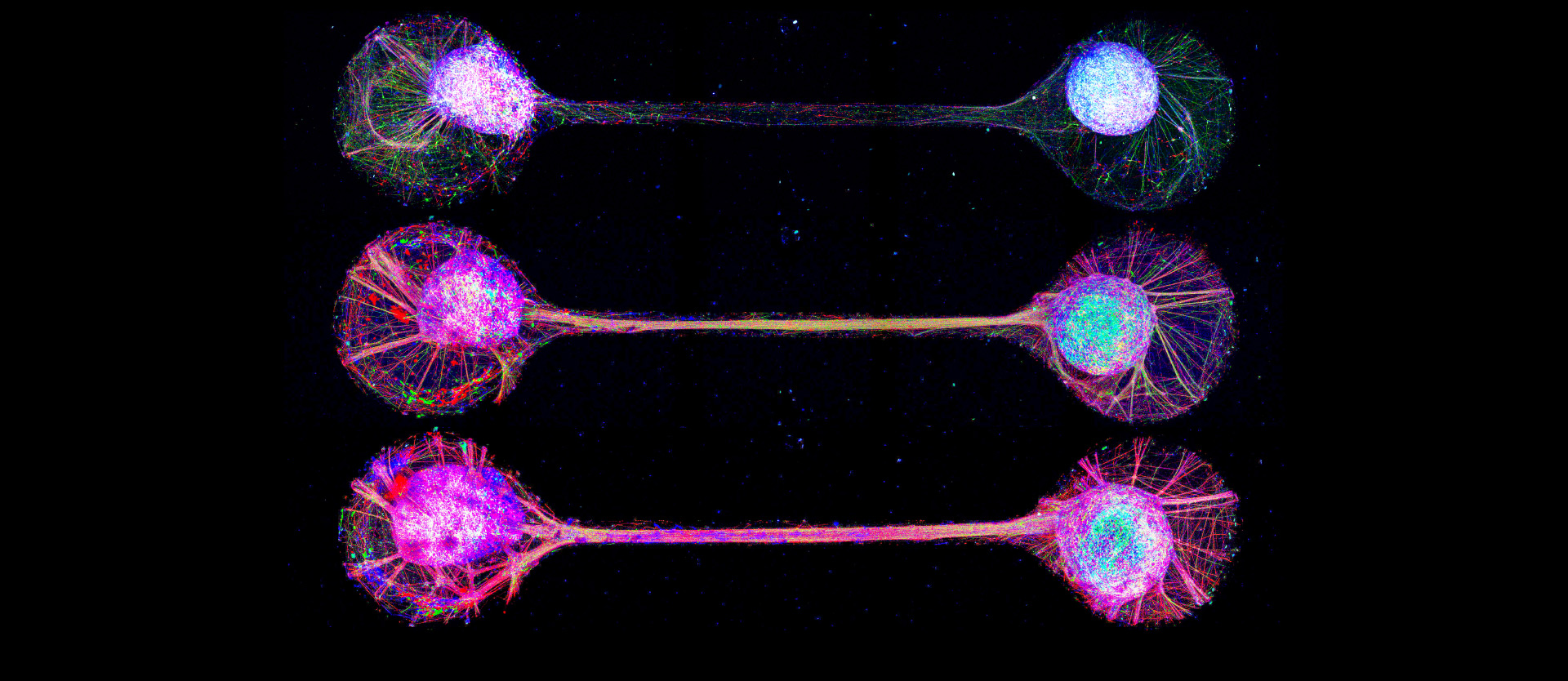
Circuit in the petri dish
For the first time, brain cells grown in the laboratory have been successfully interconnected in a controlled manner, thus mimicking the brain's complicated network of neurons.

Understanding the exact mechanisms of the development and functions of the human brain is a highly complex matter. Animal experiments are only suitable for this to a limited extent, as there are many differences between species in terms of brain structure. Laboratory-grown brain cells do not have the characteristic connections that human brain cells have. However, it is precisely these interregional connections and the circuits they create that are essential for many of the brain functions that make us human.
Researchers led by Dr. Tatsuya Osaki from the University of Tokyo have now overcome a major hurdle to a better understanding of these interregional brain cells. Together with French colleagues, they have succeeded for the first time in interconnecting laboratory-grown brain cells in a controlled manner, thus mimicking the brain's complicated network of neurons.
The researchers had already generated brain circuits under laboratory conditions in earlier studies. The team used so-called neuronal organoids as building blocks for the network. These are novel, three-dimensional cell cultures in which human stem cells are grown into three-dimensional, brain-like structures. Osaki and his colleagues created the connections between the organoids by linking their axons together. Axons are the long, narrow cell extensions with which nerve cells are in contact with their neighbors. By linking the axons, axonal bundles over 100 micrometers thick were formed between the brain cells.

The microscope image shows these bundles as connecting strands between the spherical cell bodies.
In individual neural organoids grown under laboratory conditions, the cells showed relatively simple electrical activity. However, when the researchers connected two neuronal organoids with axonal bundles, they observed how these connections helped to generate and synchronize activity patterns between the organoids, which is similar to connections between two regions in the brain.
The brain organoids that were connected to axonal bundles showed more complex activity than single organoids. When the team stimulated the axonal bundles optogenetically, i.e. with light, the activity of the organoids changed. They were influenced by these changes for some time. A process known as plasticity.

“Our results suggest that connections of axonal bundles are important for the development of complex networks,” explains Yoshiho Ikeuchi, lead author of the study. “Complex brain networks are responsible for many profound functions such as language, attention and emotions.”
The ability to study human neural circuits grown in the laboratory will improve our knowledge of how these networks form and change in different situations. It may lead to better treatments for brain diseases,” the researchers are certain.
Original publication:
Osaki, T., Duenki, T., Chow, S.Y.A. et al.
Complex activity and short-term plasticity of human cerebral organoids reciprocally connected with axons. Nat Commun 15, 2945 (2024). doi.org/10.1038/s41467-024-46787-7
Nature, 10 April 2024
DOI: doi.org/10.1038/s41467-024-46787-7












